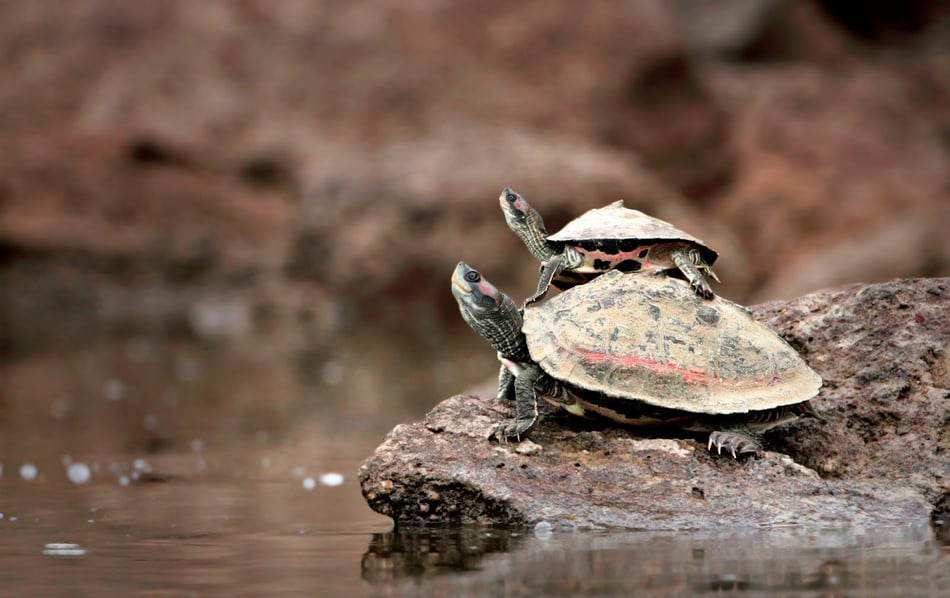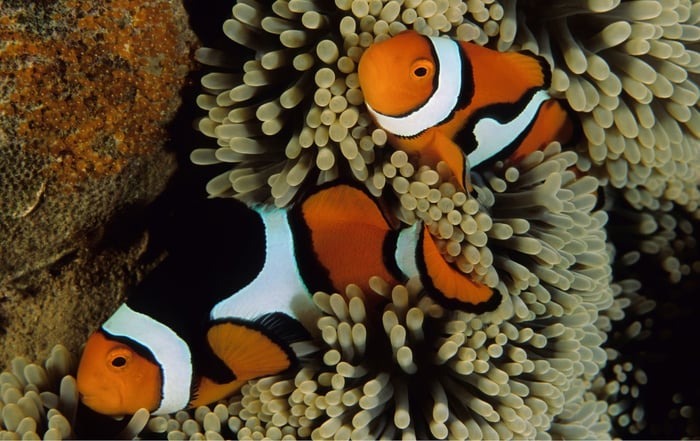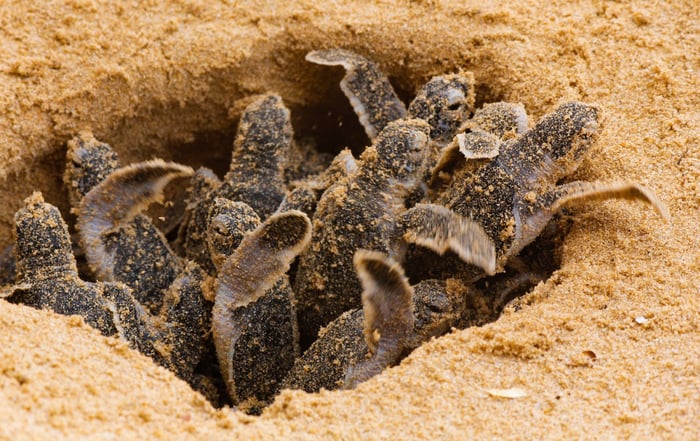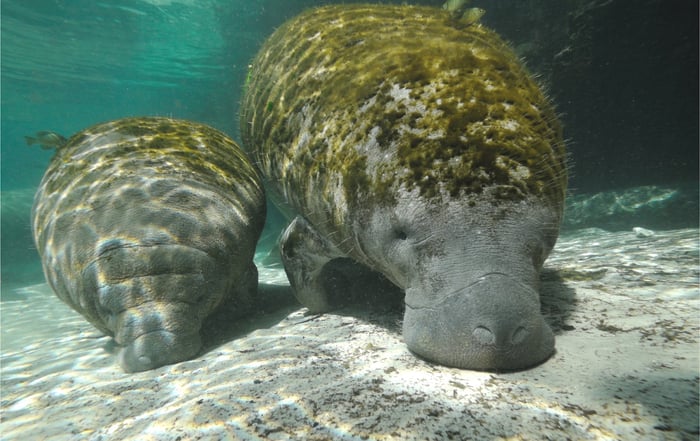IMARCS Foundation’s Groundbreaking Study on Giant Clams and Carbon Sequestration is Officially Underway

Tin
4
min. read

Each part of marine life has its own unique story. One of the most fascinating chapters of these tales is the remarkable parental behaviors of various marine species. From the protective embrace of an octopus shielding its eggs to the nurturing seahorses, where males play an active role in childbirth, the sea is filled with narratives of parental love and sacrifice.
Delving into these behaviors isn't just an exercise in awe and wonder—it's crucial for marine conservation. By understanding these innate behaviors, we gain insights that on how to continue to nature the sea that has gifted us with many experiences, discoveries, and sights to see.
Seahorses: Fathers that Give Birth
In the mesmerizing realm of marine life, seahorses stand out not only for their equine-like appearance but also for their unique reproductive roles. Contrary to the norm in most animal species, it's the male seahorses that undertake the responsibility of carrying and nurturing their offspring.
The fascinating role reversal in seahorses begins when the female deposits her eggs into a special brooding pouch on the male's abdomen, where he then fertilizes them. This allows the male seahorse to control the environment of their young whilst allowing the female seahorse to produce more eggs.

For weeks, the dedicated male seahorse faithfully carries these eggs, providing oxygen and nourishment through a network of capillaries. When the time is right, the male undergoes muscular contractions to give birth, releasing the fully formed juvenile seahorses into the water.
This remarkable process, however, is not without its vulnerabilities. During their period of pregnancy, male seahorses become slower and more susceptible to predators, showcasing an incredible dedication to the next generation even in the face of threat.
Their unique reproductive roles underscore the diverse ways marine species ensure their lineage's continuation, reminding us of the delicate balances and intricate behaviors of the underwater world.
Clownfish: Fiercely Protective Parents

Clownfish, with their vibrant colors and patterns, are perhaps best known for their mutualistic relationship with sea anemones. The stinging tentacles of sea anemones provide a safe haven for clownfish from potential predators. In return, clownfish lure in food for the anemone and clean its tentacles, creating a harmonious balance.
When it comes to parenting, clownfish exhibit remarkable diligence. Both parents play an active role in guarding their eggs. The chosen nesting site, usually close to their anemone protector, is cleaned meticulously by both the male and the female.
Once the eggs are laid, the male usually takes on the role of their primary guardian, fanning them to ensure adequate oxygen supply and guarding them fiercely against potential predators. Clownfish societies are dominated by females, and they have a unique ability to change their sex. In a pair, if the dominant female dies, the male partner can undergo a gender transformation to become the female, ensuring the survival and continuity of their lineage.
Sea Turtles: A Mother's Arduous Journey
Sea turtles, ancient mariners of our blue planet, embark on one of the most awe-inspiring journeys of the animal kingdom. Mature females undertake perilous voyages, sometimes spanning thousands of miles, to return to the very beaches where they themselves hatched. This incredible natal homing instinct ensures that, generation after generation, sea turtles find a familiar and suitable nesting environment.

However, this journey isn't without its trials. On their way to nesting sites, sea turtles face a myriad of challenges. Predators like sharks are a constant threat in the deep blue. Upon reaching the shore, raccoons, birds, and crabs eagerly await the chance to feast on their eggs. Human interference, including coastal development, and beachfront lighting further endangers these majestic creatures and their offspring. Even after overcoming these hurdles, the survival rate for hatchlings remains dishearteningly low, with only about one in a thousand reaching maturity. Yet, against all odds, the enduring instinct of mother sea turtles to return to their birthplace is a testament to nature's determination and the intricate dance of life.
Manatees: Gentle Guides

The bond between a manatee mother and her calf is undeniably touching and vital for the survival of the species. Upon birth, calves, guided by instinct, quickly make their way to the water's surface for their first breath, often aided by their mothers.
This maternal guidance doesn't end there. Manatee calves nurse for an extended period, sometimes up to two years, drawing nutrients and forming close bonds with their mothers in the process. Throughout this period, the mother provides not only sustenance but essential lessons on feeding grounds, migratory paths, and vital survival techniques.
The role of motherhood becomes ever more critical, ensuring the survival and continuity of the species. These gentle guides of the shallows remind us of the intrinsic value of nurturing in the marine world and the importance of safeguarding the strong family ties that can be found underwater as well.
Preserving the Intimate Bonds of the Ocean
The vast ocean teems with stories of parental dedication, from the protective embrace of clownfish to the nurturing journeys of sea turtles and the tender bonds of manatees.
Preserving marine habitats isn't just about protecting these animals; it's about safeguarding the unique relationships and behaviors that define them. As stewards of our planet, recognizing the profound interconnectedness of marine life, their habitats, and our actions is crucial.
IMARCS shares this appreciation for the wonders of marine life and the vital role they play in our global ecosystem. Our mission is driven by a deep commitment to preserving and restoring marine habitats. Together, we can ensure that the extraordinary parenting efforts of marine life continue to thrive in an environment where the ocean's treasures are cherished and protected for generations to come.
Together we can make a real, positive, and measurable impact on our beloved planet.
References:
Casas, L., Saborido-Rey, F., Ryu, T., Michell, C., Ravasi, T., & Irigoien, X. (2016). Sex change in clownfish: Molecular insights from transcriptome analysis. Scientific Reports, 6(1). https://doi.org/10.1038/srep35461
Clownfish. (n.d.). Great Barrier Reef Foundation. Retrieved September 5, 2023, from https://www.barrierreef.org/the-reef/animals/clownfish
Emslie, K. (2018, June 16). How do sea turtles find their way home? Discover Wildlife. https://www.discoverwildlife.com/animal-facts/reptiles/how-do-sea-turtles-find-their-way-home/
Foster, S. J., & Vincent, A. C. J. (2004). Life history and ecology of seahorses: implications for conservation and management. Journal of Fish Biology, 65(1), 1–61. https://doi.org/10.1111/j.0022-1112.2004.00429.x
Osterloff, E. (n.d.). Manatees: what is a sea cow? Nhm.ac.uk. Retrieved September 5, 2023, from https://www.nhm.ac.uk/discover/what-is-a-sea-cow.html
Reproduction. (2017, September 19). Save the Manatee Club. https://www.savethemanatee.org/manatees/reproduction/
Sea anemone and clownfish: Behind the scenes of an iconic friendship. (2020, October 5). National Marine Sanctuary Foundation; Marine Sanctuary Foundation. https://marinesanctuary.org/blog/sea-anemone-and-clownfish-behind-the-scenes-of-an-iconic-friendship/
Silva, E., Marco, A., da Graça, J., Pérez, H., Abella, E., Patino-Martinez, J., Martins, S., & Almeida, C. (2017). Light pollution affects nesting behavior of loggerhead turtles and predation risk of nests and hatchlings. Journal of Photochemistry and Photobiology. B, Biology, 173, 240–249. https://doi.org/10.1016/j.jphotobiol.2017.06.006
Varghese, B. (n.d.). Safeguarding Their Future: Alloparental Care in Clownfishes. Wetwebmedia.com. Retrieved September 5, 2023, from http://www.wetwebmedia.com/ca/volume_4/V4I4/Parental%20Care_files/artParental_Care.htm
Weintraub, K. (2018, April 13). Sea turtles use magnetic fields to find their birthplace beach. The New York Times. https://www.nytimes.com/2018/04/13/science/sea-turtles-magnetic-field.html
Whittington, C. (2022, September 6). New research discovers the elaborate and unique way seahorse fathers give birth. The University of Sydney. https://www.sydney.edu.au/news-opinion/news/2022/09/06/new-research-discovers-the-elaborate-and-unique-way-seahorse-fat.html